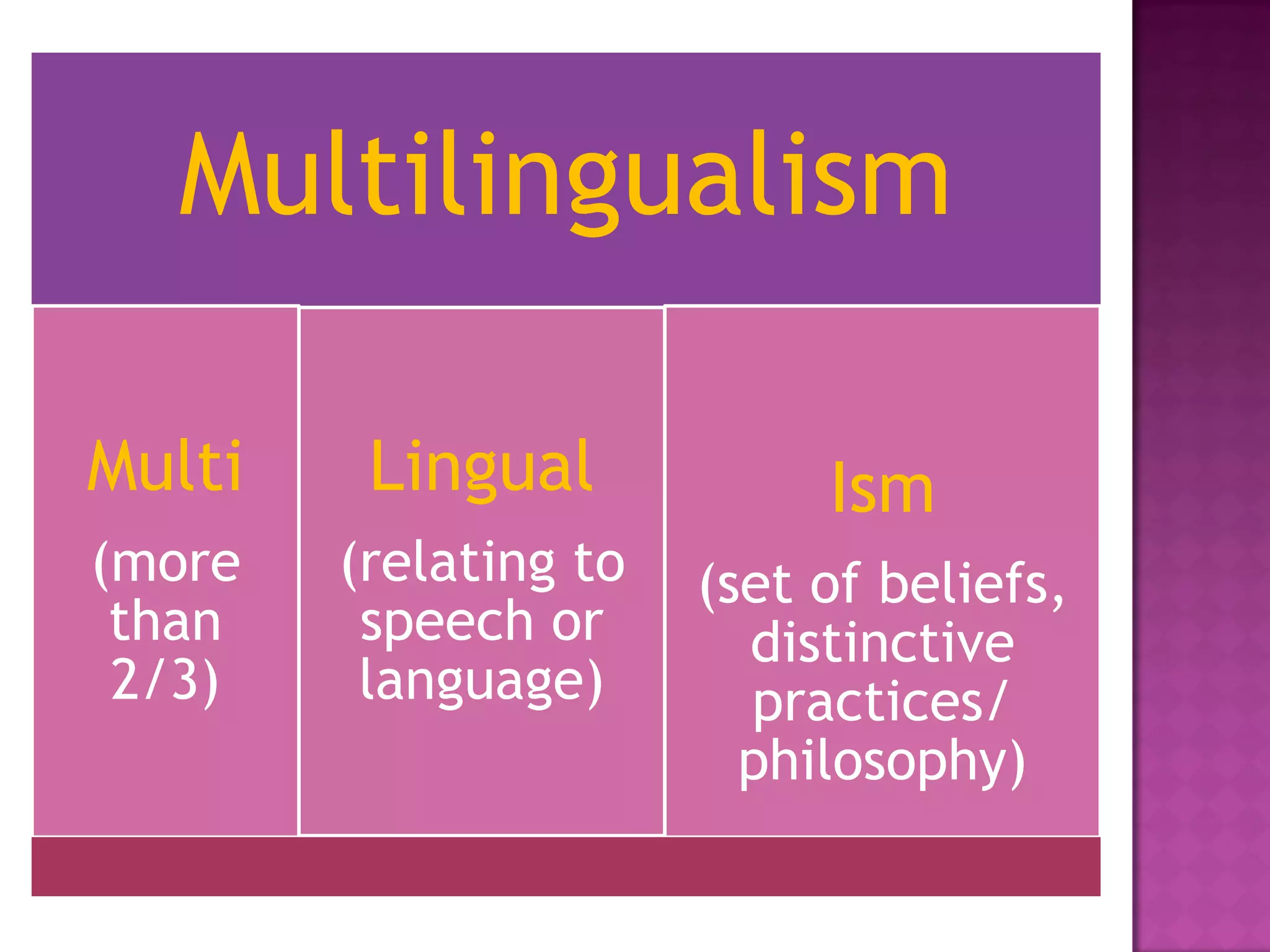The document discusses multilingualism and multilingual education. It defines multilingualism as the ability to communicate effectively in three or more languages. Multilingual education emphasizes using a child's first language initially in the classroom and then transitioning to a second language. Research shows that a strong foundation in the first language leads to better educational outcomes overall. The document advocates for multilingual education in schools to promote cognitive growth, educational achievement, and social harmony.















